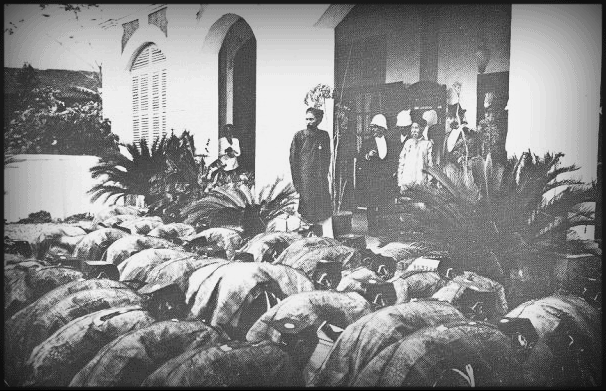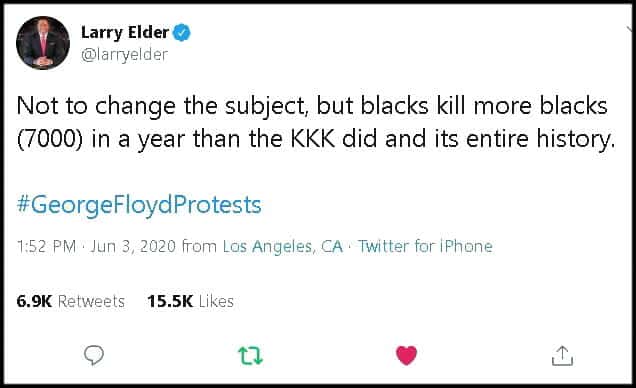The racist society the Left has made, and some wonderful liberal tears from the cracking under pressure[?] Merrick Garland:
Anti-Law Enforcement

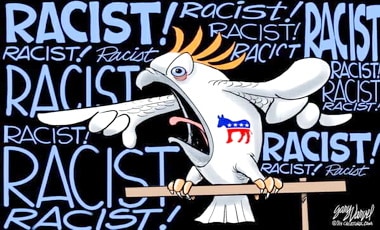
Amala Ekpunobi: How I Stopped Hating the Police
Amala Ekpunobi grew up believing that policing in America was systemically racist. An outspoken activist, she marched for Black Lives Matter and advocated to defund the police. A chance encounter with a kind police officer made Amala begin to question her assumptions. Eager to validate her long-held beliefs, she investigated the facts behind the “racist police” narrative. The deeper she dug, the more her doubt grew, ultimately leading to a confrontation with the truth that transformed her entire worldview.
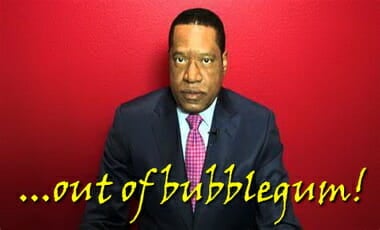
Data Scientist DESTROYS the BLM Narrative | Larry Elder
Video description under video:
Zac Kriegman had the ideal résumé for the professional-managerial class: a bachelor’s in economics from Michigan and a J.D. from Harvard and years of experience with high-tech startups, a white-shoe law firm, and an econometrics research consultancy. He then spent six years at Thomson Reuters Corporation, the international media conglomerate, spearheading the company’s efforts on artificial intelligence, machine learning, and advanced software engineering. By the beginning of 2020, Kriegman had assumed the title of Director of Data Science and was leading a team tasked with implementing deep learning throughout the organization.
But within a few months, this would all collapse. A chain of events—beginning with the death of George Floyd and culminating with a statistical analysis of Black Lives Matter’s claims—would turn the 44-year-old data scientist’s life upside-down. By June 2021, Kriegman would be locked out of Reuters’s servers, denounced by his colleagues, and fired by email. Kriegman had committed an unpardonable offense: he directly criticized the Black Lives Matter movement in the company’s internal communications forum, debunked Reuters’s own biased reporting, and violated a corporate taboo. Driven by what he called a “moral obligation” to speak out, Kriegman refused to celebrate unquestioningly the BLM narrative and his company’s “diversity and inclusion” programming; to the contrary, he argued that Reuters was exhibiting significant left-wing bias in the newsroom and that the ongoing BLM protests, riots, and calls to “defund the police” would wreak havoc on minority communities. Week after week, Kriegman felt increasingly disillusioned by the Thomson Reuters line. Finally, on the first Tuesday in May 2021, he posted a long, data-intensive critique of BLM’s and his company’s hypocrisy. He was sent to Human Resources and Diversity & Inclusion for the chance to reform his thoughts.
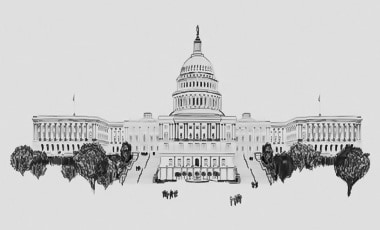
Larry Elder Covers The Capitol Incident
This is from yesterdays show (1/7/2021), and is a large sample of why The Sage is great at what he does. I add some video which radio only allows audio to play, as well as adding some of the video from @The Larry Elder Show — HERE: Enjoy, it is a stitching of large sections from all three hours.
Last segment of the above is a great shorter listen. This is the last portion of a larger audio, HERE. Larry Elder discusses new studies – but included one from the 1970s… this is the first time I have heard this particular study
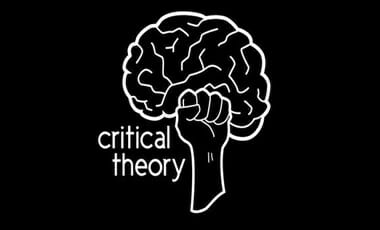
Larry Elder Discusses Racial Myths & Critical Race Theory
This is where Larry Shines… that is… laying down facts to destroy myths. This is a combining of two segments from the 8th and the 9th of this month. Here is a story on the incident via THE DAILY MAIL.
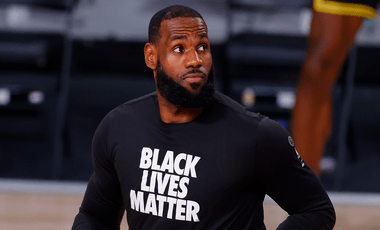
LeBron James Analyzes MVP “Narrative,” But Not Killer Cop Narrative
What’s up with these celebrities and athletes weighing in on police shootings and buying the narrative that police are out killing black people just because they’re black? For example, LeBron James has been very vocal about the Black Lives Matter movement. This year, James did not win the Most Valuable Player award, and he gave a thoughtful response, saying voters may have embraced a “narrative” instead of “really watching the game of basketball.” Why didn’t he use this type of analysis to study police interactions with black people?

Heather Mac: Racist Police & Legal Graffiti (Larry Elder | John Hinderaker)
Larry poses this question to Heather Mac Donald of the Manhattan Institute.
Here is NATIONAL REVIEW discussing the indecent, as well as the 40-minute lecture she and Larry discussed in the opening of the above video:
Yesterday (July 30th) American Experiment hosted Heather Mac Donald for an online presentation on the conjunction of crime, race and policing, a topic on which Heather is acknowledged to be the country’s leading expert. Her presentation is a comprehensive refutation of the myth of “systemic bias” in policing. The data prove the opposite. Here is yesterday’s program, in its entirety: (Support the MN Police)
Here is Heather’s NEW YORK POST article in part:
Mayor Bill de Blasio has canceled a graffiti-eradication program that cleaned private buildings, thus deliberately sending the city back to its worst days of crime and squalor.
Nothing sent a stronger signal in the late 1980s that New York was determined to fight back from anarchy than the transit system’s campaign against subway graffiti. That campaign was based on broken-windows policing, a theory that recognizes that physical disorder and low-level lawlessness, such as graffiti, turnstile-jumping and litter, telegraph that social control has broken down. That low-level lawlessness invites more contempt for norms of behavior, including felony crime.
The subway authority declared victory over the graffiti vandals in 1989, even as privately funded business-improvement districts were increasing graffiti cleanup in retail corridors across the five boroughs. Inspired by broken-windows theory, Police Commissioner Ray Kelly, serving then under Mayor David Dinkins, removed the squeegee men who menaced helpless drivers queuing for the city’s bridges and tunnels. And with the mayoralty of Rudolph Giuliani in 1994, public-order maintenance entered the city’s governing philosophy.
The steepest crime drop of any big city in the country — nearly 80 percent over three decades — followed. Newly restored storefronts and avenues cleared of aggressive panhandlers invited a flood of tourists and new residents.
[….]
To a progressive, by contrast, graffiti is a “political statement,” as The New York Times recently put it, a courageous strike against stultifying bourgeois values. It represents urban grit and resistance to corporate hegemony. The property owner whose building has been unwillingly appropriated is a non-entity, the tagger is the vibrant anti-capitalist soul of the city.
The official reason for the termination of the graffiti-removal program, which allowed building owners and residents to report graffiti to 311 and receive city assistance in removing it, was New York’s straitened coronavirus finances.
That justification is unpersuasive. The administration found the resources this June to pay city workers to paint massive Black Lives Matter logos on the road in front of Trump Tower and on avenues in Harlem and Brooklyn, in the process putting the government’s imprimatur on a political viewpoint; de Blasio himself, on the taxpayer’s dime, joined the BLM paint-in on Fifth Avenue to make sure that President Trump understood the taunt against him.
And when two women scattered black paint on those BLM logos to protest anti-cop hatred, de Blasio’s administration found further resources to arrest and charge them with criminal mischief — for graffiti vandalism, no less — and to repaint the BLM slogans.
[….]
The decision to bow to the vandals will accelerate the city’s slide back to being ungovernable, a slide terrifyingly exemplified by ongoing violence against police officers. Ending graffiti cleanup shows that the understanding of what made the city governable was never universally shared.
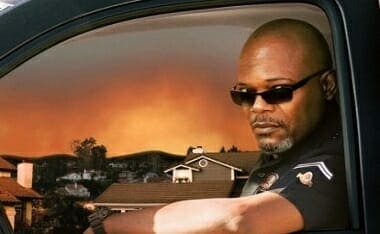
A Black Officer In Portland Shares His Thoughts
Black Portland Cop: Yeah I Guess It’s a Little Weird Standing With Majority-Minority Police Officers and Being Attacked in Racialized Terms by Majority-White Antifa Members
— ACE OF SPADES
Asked for an example, Jackson said people of color will frequently come up to speak to him during protest to ask him what he thinks about the death of George Floyd or some other issue. But inevitably when he tries to engage with these people, “someone white comes up ‘F the police. Don’t talk to him.'” Jackson said that after a while he could see it coming.When a young African-American girl came up to him at a recent protest to ask why he wouldn’t speak to the protesters he said he started to explain that every time he tried to do so a white protester would cut him off. Jackson said, “right when I said that this white girl pops right in front of her.” The girl was amazed and said, “He just said that was going to happen.” Jackson said to the girl, “I told you.”
Jackson then said to the white girl who had interrupted, “I’ve been called the N-word. She’s been called the N-word. Why are you talking to me this way? Why do you feel that she can’t speak for herself to me? Why is it that you feel you need to speak for her when we’re having a conversation?” The white girl replied, “Someone told me to do it.”
Here is a clip of the longer video over at HOTAIR:
Portland Police Officer Jackson Speaks Out against Racist White "Protesters" pic.twitter.com/qnrgWdMv0L
— Brandon Farley • Portland Protest Reporter (@FarleyMedia) July 9, 2020
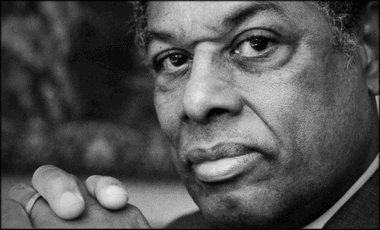
Point of No Return? Thomas Sowell
Here is the intro via PJ-MEDIA:
Thomas Sowell appeared with Mark Levin on the July 12 episode of Life, Liberty, and Levin to talk about his new book and to share his opinion on the push to fight “systemic racism” in America. Sowell told Levin that he fears America is approaching a point of no return, and that too many Americans have caved in to those attacking the country as systemically racist. Of the term systemic racism, Sowell said, “It really has no meaning that can be specified and tested in the way that one tests hypotheses.”
Right off the bat, Levin asked Sowell about the rioting that has gone on nightly in America since the murder of George Floyd at the hands of the Minneapolis police. “I’m regarded as pessimistic,” Sowell said, “but I was never pessimistic enough to believe that things would degenerate to the point where they are now, where adult human beings are talking about getting rid of the police … what is frightening is how many people in responsible positions are caving in to every demand that is made, repeating any kind of nonsense that you’re supposed to repeat. I do believe that we may well reach a point of no return. I hope, of course, that will never happen.”
Of the term “systemic racism,” Sowell told Levin it reminds him of Joseph Goebbels. “It does remind me of the propaganda tactics of Joseph Goebbels in the age of the Nazis,” he said. “He was supposed to have said, people will believe any lie if it’s repeated long enough and loud enough. And that’s what we’re getting. It’s one of many words that even the people who use it don’t have any idea what they’re saying. Their premise is served by having other people cave in.”…….
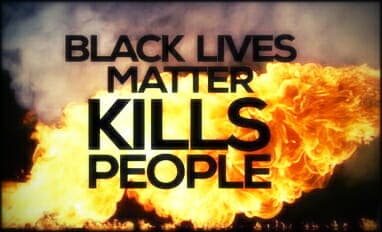
“All Lives Matter – Period” – Grandfather of Murdered 11-year Old
11-year old Davon McNeal was murdered on the 4th of July. Six other children also lost their lives from senseless acts of violence that day. Davon’s grandfather has a message to Black Lives Matter: ALL LIVES MATTER. This is about people – period. It is not a black versus white issue, it’s about COMMUNITIES standing strong and helping each other build. We all have to live, work, play in the same community. There is no room for riots, anarchy, or murder in our streets. Lawlessness is not the American way and defunding the police will only expand our problems
11 year old Davon McNeal was shot and killed on The Fourth of July in his Washington DC neighborhood. Davon was one of 6 black children killed in shootings this month. Their lives matter. Benny Johnson travels to the heart of Davon’s community to find out if residents ACTUALLY WANT to “Defund The Police” Every single Leftist should listen to these hurting Americans.
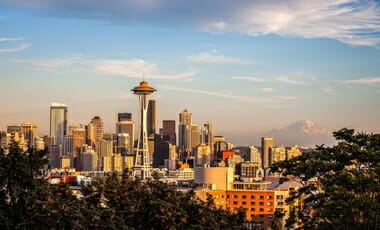
Seattle’s Been Rotten For A Long Time
The establishment of CHAZ in Seattle is an interesting and zany story to follow, but it’s not like Seattle has only recently been heading towards a socialist meltdown. Stu looks at the disturbing road leading up to our insane current climate in the city.
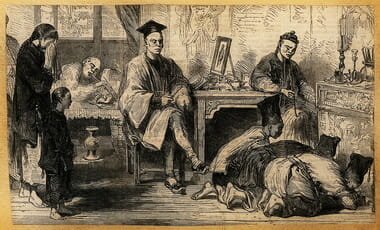
American’s Should Not Kneel/Kowtow Before Provably False Ideas
KOW-TOW
- DEFINITION: To kneel and touch the forehead to the ground in expression of deep respect, worship, or submission, as formerly done in China…. To show servile deference. synonym: fawn.
Vietnamese mandarins kowtowing before the Governor-General of Tonkin
National Guard kneels to their people of color masters.pic.twitter.com/R71XJ5jpu2
— Bubette Salam (@BubetteS) June 3, 2020
AMERICAN THINKER has an intro to the below Tucker Carlson video I wish to excerpt from before you watch the video:
Dr. McCabe simply came to a place where his own knowledge of American racism—knowledge his personal integrity prevented him from denying—opened a vacuum of moral authority within him. He was not suddenly stricken with pangs of guilt over American racism. He simply found himself without the moral authority to reprimand us for our disruptive behavior. He knew that we had a point, that our behavior was in some way connected to centuries of indisputable injustice. So he was trumped by his knowledge of this, not by his remorse over it, though he may have felt such remorse. Our outrage at racism simply had far greater moral authority than his outrage over our breach of decorum. And had he actually risen to challenge us, I was prepared to say that we would worry about our behavior when he and the college started worrying about the racism we encountered everywhere, including on his campus.
And this is when I first really saw white guilt in action. Now I know it to be something very specific: the vacuum of moral authority that comes from simply knowing that one’s race is associated with racism. Whites (and American institutions) must acknowledge historical racism to show themselves redeemed of it, but once they acknowledge it, they lose moral authority over everything having to do with race, equality, social justice, poverty, and so on. They step into a void of vulnerability. The authority they lose transfers to the “victims” of historical racism and becomes their great power in society. This is why white guilt is quite literally the same thing as black power.
Steele, Shelby, White Guilt [Kindle Locations 370-374]. HarperCollins; emphasis mine.
In the 1960s, thanks to Jim Crow and endemic racism in the Northeast, whites had good reason to feel guilty.
But what about whites in 2020? Well, that’s where the Big Lie comes in….
Why Are Americans Surrendering To Violent Mobs?
Because They’ve Been Told They Have To
Here is an excellent CITY-JOURNAL article that Heather Mac Donald draws sensible reactions to these outliers:
This is not to say that police are perfect, or that officers never abuse their power; they are not perfect, and some do succumb to what can be an intoxicating sense of authority. This is a truth I’ve personally experienced. Nor is it to say that there is no room to improve policing and to make police-citizen encounters both safer and less fraught. But if there is to be any hope for peacefully bridging the gap so strikingly represented by the glass-covered asphalt separating rioters and police, destructive hyperbole needs to be recognized for what it is.
[….]
This is in line with other data I highlighted in these pages two years ago—namely, a 2018 study published in the Journal of Trauma and Acute Care Surgery, which analyzed more than 114,000 criminal arrests made across three midsize police departments, finding that more than 99 percent of arrests were carried out without the use of physical force. In 98 percent of the cases in which those officers did use physical force, suspects “sustained no or mild injury.”
Historical context is important, too. In 1971, New York City Police discharged their firearms 810 times, wounding 221 people and killing 93. By 1990, those numbers were down to 307, 72, and 39, respectively. In 2016, police discharged their weapons just 72 times, wounding 23, killing 9. This is real progress; but it would come as news to anyone observing the mobs that have spent the last few days hurling insults, rocks, and Molotov cocktails at exhausted and demoralized members of the NYPD.
As troubling as cases like that of George Floyd are, we must remember that they are outliers. That knowledge won’t bring comfort or justice to those harmed or killed by police who use unjustifiable force, or their families; but it can help lower the temperature in an environment that is about as inhospitable to reasonable discussion as can be imagined. …
THE DAILY CALLER weighs in:
…However, this destructive delusion has been completely demolished by a recent study that demonstrates there is no epidemic of racially biased police shootings of black people, that black citizens are not more likely to be shot by white officers, and that the shooting of unarmed people of any race is extraordinarily rare. In fact, an individual American citizen is substantially more likely to be struck by lightning than he is to be shot by the police while unarmed.
In the article, published in the Proceedings of the National Academy of Sciences, Joseph Cesario of Michigan State University and David Johnson of the University of Maryland assess hundreds of fatal police shootings since 2015. Their groundbreaking study exposes what is, at least for the anti-police mythmakers, an inconvenient truth indeed — that police shootings of citizens are not motivated by race or racism.
Here are the facts: 55% of all people fatally shot in America by the police are white — more than double the number of black (27%) or Hispanic (19%) individuals. Those police critics who accept at least this fact are generally quick to point out that black citizens are 27% of the people shot and killed by the police despite making up only 14% of the U.S. population. They say this disparity provides statistical proof of “systemic racism and bias,” but this superficial explanation doesn’t stand up. There are racial disparities in police shootings, but the disparities are not caused by racism.
According to Cesario and Johnson, who analyzed crime data from more than 200 U.S. counties, the strongest predictor of being shot by the police isn’t a person’s race, but whether the person is engaging in violent criminal behavior. Disparities across the major races in rates of police shooting are almost entirely consistent with the rates at which members of these different races are accused by victims of committing violent crimes. In other words, the greater the number of crimes committed by white individuals in a county, the more likely a white person will be shot by the police. And poor white Americans in Appalachia, for example, often are involved in police shootings. But, the greater number of crimes committed by black individuals in a county, the more likely it is that a black person will be shot by the police. The same is true for Hispanic individuals.
It’s not “systemic racism” that makes it more likely that a person will be shot by the police; it is how mathematically likely that person is to be committing crime. An individual’s behavior, not his race, is the determining factor.
The claim that racial bias on the part of individual officers is the cause of racial disparities in police shootings was also specifically found to be untrue. The researchers determined that: “The race of the officer doesn’t matter when it comes to predicting whether a black or white citizen will be shot.” White officers are no more likely to shoot a black person than are black or Hispanic officers. Not only is racial bias on the part of individual officers not a significant predictor of police shootings of black people, but also, remarkably, police officers off all races are statistically less likely to shoot a black than a white person under the same circumstances….
AGAIN, for good measure:
Here is Heather Mac Donald’s WALL STREET JOURNAL article in full [I believe] with thanks to PECKFORD 42:
By Heather Mac Donald
June 2, 2020
George Floyd’s death in Minneapolis has revived the Obama-era narrative that law enforcement is endemically racist. On Friday, Barack Obama tweeted that for millions of black Americans, being treated differently by the criminal justice system on account of race is “tragically, painfully, maddeningly ‘normal.’ ” Mr. Obama called on the police and the public to create a “new normal,” in which bigotry no longer “infects our institutions and our hearts.”
Joe Biden released a video the same day in which he asserted that all African-Americans fear for their safety from “bad police” and black children must be instructed to tolerate police abuse just so they can “make it home.” That echoed a claim Mr. Obama made after the ambush murder of five Dallas officers in July 2016. During their memorial service, the president said African-American parents were right to fear that their children may be killed by police officers whenever they go outside.
Minnesota Gov. Tim Walz denounced the “stain . . . of fundamental, institutional racism” on law enforcement during a Friday press conference. He claimed blacks were right to dismiss promises of police reform as empty verbiage.
This charge of systemic police bias was wrong during the Obama years and remains so today. However sickening the video of Floyd’s arrest, it isn’t representative of the 375 million annual contacts that police officers have with civilians. A solid body of evidence finds no structural bias in the criminal-justice system with regard to arrests, prosecution or sentencing. Crime and suspect behavior, not race, determine most police actions.
In 2019 police officers fatally shot 1,004 people, most of whom were armed or otherwise dangerous. African-Americans were about a quarter of those killed by cops last year (235), a ratio that has remained stable since 2015. That share of black victims is less than what the black crime rate would predict, since police shootings are a function of how often officers encounter armed and violent suspects. In 2018, the latest year for which such data have been published, African-Americans made up 53% of known homicide offenders in the U.S. and commit about 60% of robberies, though they are 13% of the population.
The police fatally shot nine unarmed blacks and 19 unarmed whites in 2019, according to a Washington Post database, down from 38 and 32, respectively, in 2015. The Post defines “unarmed” broadly to include such cases as a suspect in Newark, N.J., who had a loaded handgun in his car during a police chase. In 2018 there were 7,407 black homicide victims. Assuming a comparable number of victims last year, those nine unarmed black victims of police shootings represent 0.1% of all African-Americans killed in 2019. By contrast, a police officer is 18½ times more likely to be killed by a black male than an unarmed black male is to be killed by a police officer.
On Memorial Day weekend in Chicago alone, 10 African-Americans were killed in drive-by shootings. Such routine violence has continued—a 72-year-old Chicago man shot in the face on May 29 by a gunman who fired about a dozen shots into a residence; two 19-year-old women on the South Side shot to death as they sat in a parked car a few hours earlier; a 16-year-old boy fatally stabbed with his own knife that same day. This past weekend, 80 Chicagoans were shot in drive-by shootings, 21 fatally, the victims overwhelmingly black. Police shootings are not the reason that blacks die of homicide at eight times the rate of whites and Hispanics combined; criminal violence is.
The latest in a series of studies undercutting the claim of systemic police bias was PUBLISHED in August 2019 in the Proceedings of the National Academy of Sciences. The researchers found that the more frequently officers encounter violent suspects from any given racial group, the greater the chance that a member of that group will be fatally shot by a police officer. There is “no significant evidence of antiblack disparity in the likelihood of being fatally shot by police,” they concluded.
A 2015 Justice Department analysis of the Philadelphia Police Department found that white police officers were less likely than black or Hispanic officers to shoot unarmed black suspects. Research by Harvard economist Roland G. Fryer Jr. also found no evidence of racial discrimination in shootings. Any evidence to the contrary fails to take into account crime rates and civilian behavior before and during interactions with police.
The false narrative of systemic police bias resulted in targeted killings of officers during the Obama presidency. The pattern may be repeating itself. Officers are being assaulted and shot at while they try to arrest gun suspects or respond to the growing riots. Police precincts and courthouses have been destroyed with impunity, which will encourage more civilization-destroying violence. If the Ferguson effect of officers backing off law enforcement in minority neighborhoods is reborn as the Minneapolis effect, the thousands of law-abiding African-Americans who depend on the police for basic safety will once again be the victims.
The Minneapolis officers who arrested George Floyd must be held accountable for their excessive use of force and callous indifference to his distress. Police training needs to double down on de-escalation tactics. But Floyd’s death should not undermine the legitimacy of American law enforcement, without which we will continue on a path toward chaos.
